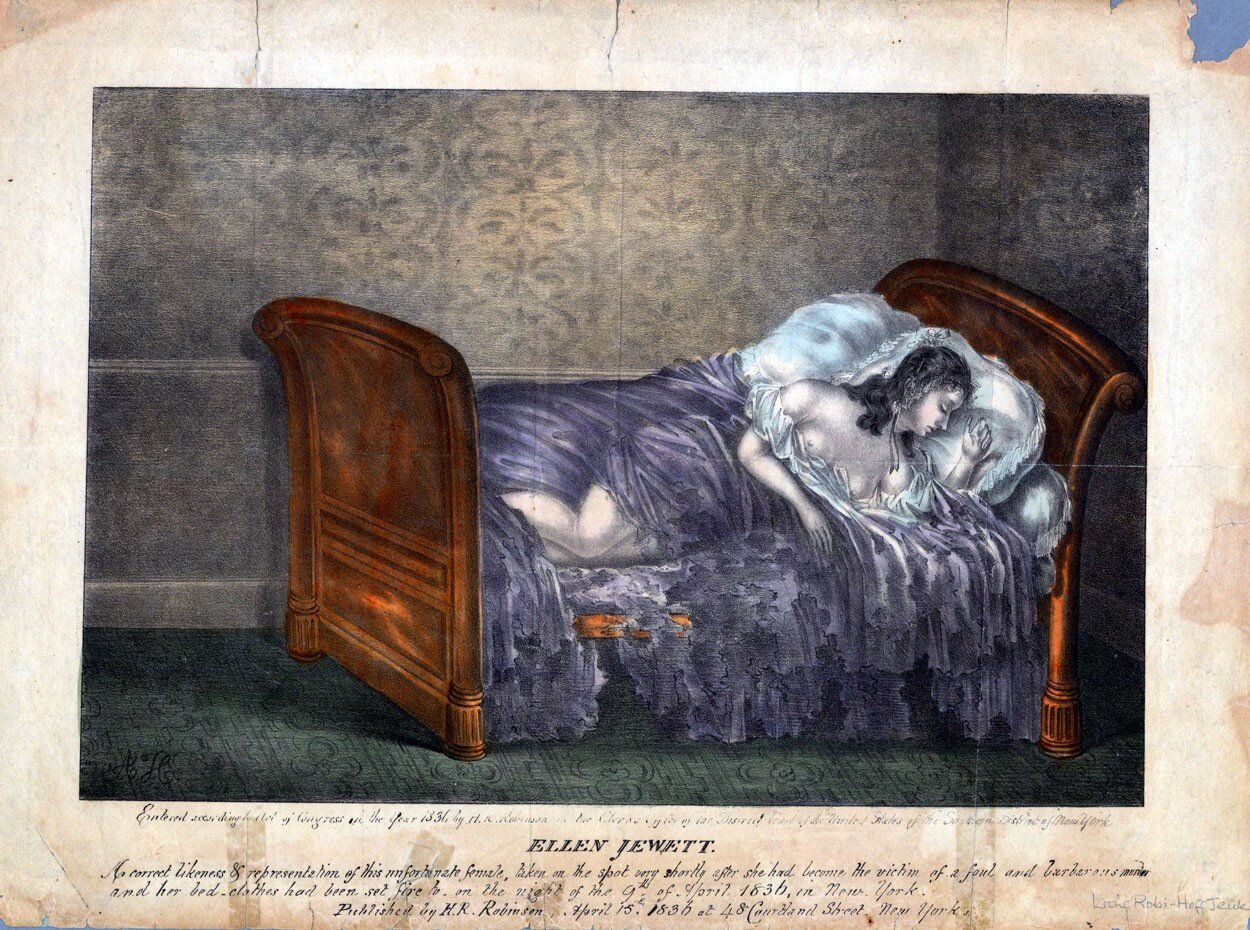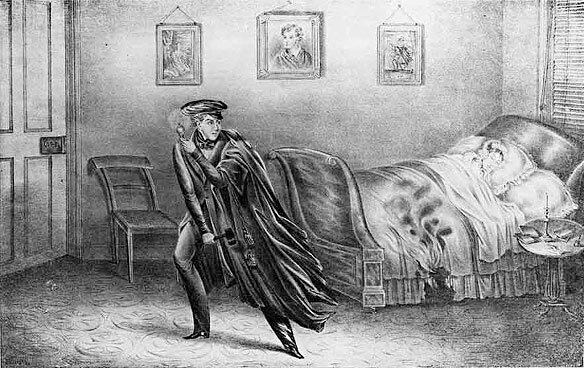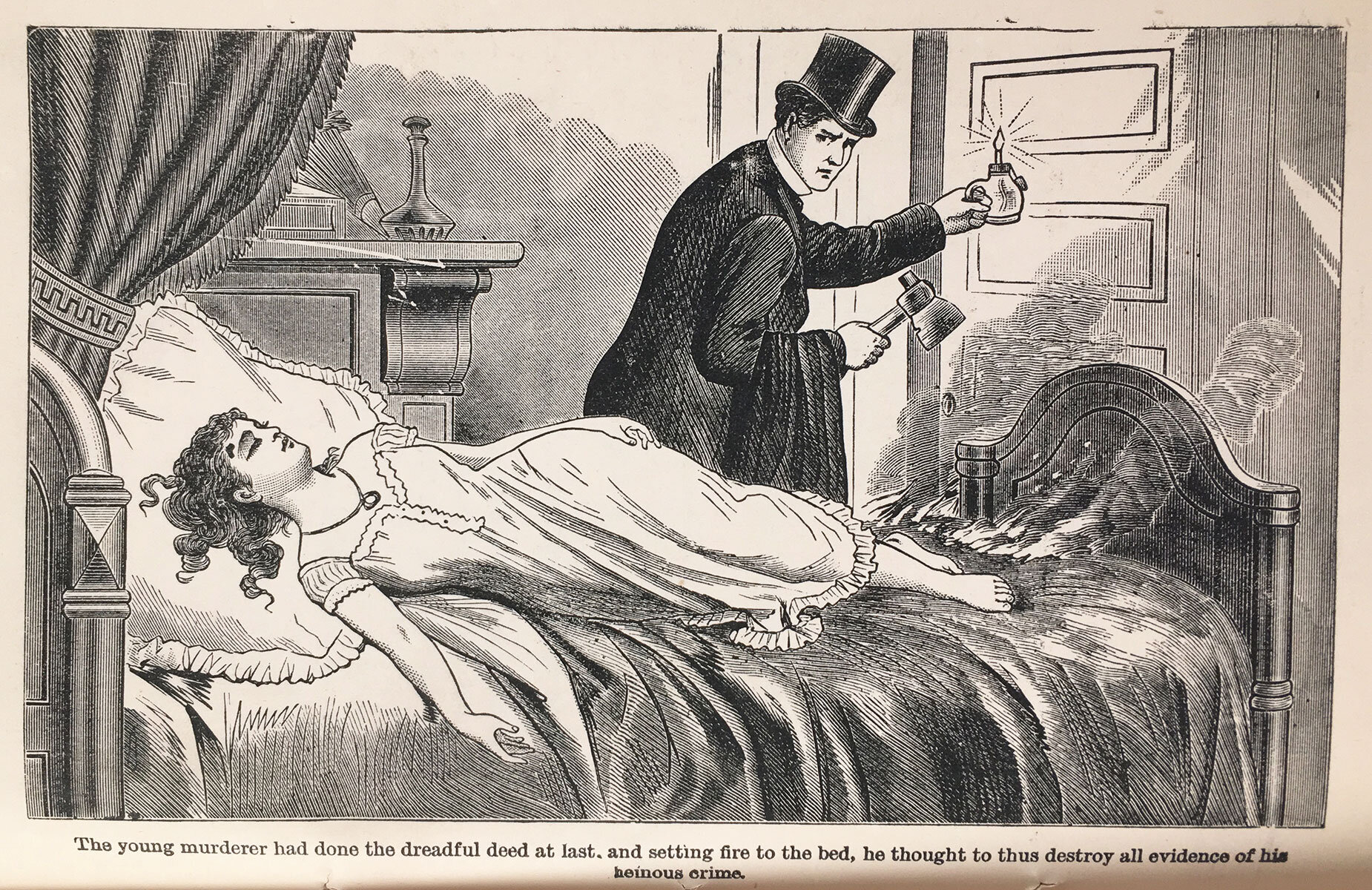The Fate of Ludwig II: Part One - The Fairytale King
Neuschwanstein castle, a grand magical-looking castle of white spires jutting above the benighted Bavarian forests, was brightly illuminated at midnight, June 11th, 1886, when the psychiatrist Bernard von Gudden arrived along with some others, commissioned to take Ludwig II, the young Fairytale King, into custody. Just the day before, it had been declared in Munich that the king was insane and unfit to govern, and the regency of Ludwig’s uncle Luitpold was proclaimed. Some officials had previously tried to take the king into custody, and they had been driven away and jailed. Now, however, the king was trapped within the walls of Neuschwanstein; what had once been his fantastical refuge from the real world had been transformed into his prison. Gudden and his men confronted and surrounded Ludwig in a corridor as he passed on his way to a tower, perhaps intending to leap to his death. The once dashing young king, now turned corpulent and misanthropic, looked darkly from one man to another. “Majesty, this is the saddest task that has ever fallen to my lot,” Gudden said, as they conducted the king to his chambers to pack some things. “How can you certify me insane without seeing me and examining me beforehand?” Ludwig demanded. “…as an experienced neurologist, how can you be so devoid of scruple as to make out a certificate that is decisive for a human life? You have not seen me for the last twelve years!” The evidence, Gudden assured him, was overwhelming. Ushering him into a carriage from which the interior handles had been removed, the commission drove through the night, eight hours, to Castle Berg, on Lake Starnberg, a residence at which the king often lodged when business called him to Munich rather than staying in the city proper. In his bedroom, holes had been drilled in the doors to listen to any conversation Ludwig might have with servants, in order to discourage the planning of escapes, and bars were installed in his window. King Ludwig was nervous and paranoid, asking constantly about the nurses and orderlies assigned to him, suspecting that they may be Prussians or Jesuits that wished to assassinate him. He did indeed have many enemies. On a walk with Ludwig along the shores of Lake Starnberg soon after the king’s installation there, Dr. Gudden assured him the staff meant him no harm and bade the men to follow at a farther distance to ease the king’s mind. As the walk seemed to calm the king, Gudden promised to take another walk with him that evening, and Ludwig stubbornly held him to that promise despite a torrential rain. Gudden directed the orderlies to stay behind, so as not to disturb the king further. When the two men did not return, the lake was searched, and the dead bodies of both Dr. Gudden and King Ludwig II were discovered. What exactly befell the men remains an enduring historical mystery. Did Ludwig II murder Gudden and drown himself? Or were his fears of assassination warranted and even prophetic?
To understand the tragic figure of Ludwig II and his fate, we must look first to his youth, when already we can see the seeds of his downfall. He was born a Wittelsbach, of a royal line that had ruled in Bavaria ever since Emperor Friedrich Barbarossa had installed his ancestor as duke there in 1180. He was the latest in a series of Ludwigs, from Ludwig the Bavarian, who’d assumed the title of Holy Roman Emperor in 1328, to his grandfather, King Ludwig I of Bavaria. In fact, as a newborn, he’d been given the name Otto, but as he’d been born on his grandfather Ludwig’s birthday, which also happened to be the feast day of St. Ludwig, the king requested his grandson’s name be changed, and thus he became Ludwig II, a child on whom hinged the future of Bavaria. But regardless of the high hopes for him, young Ludwig was denied the affection that he yearned for as a child, as was common among Victorian-era royalty. He was raised in isolation, with strict rules that led to beatings if he did not meet very high expectations. It is not surprising, then, that even at an early age, Ludwig was given to brooding and a melancholy disposition. This temperament, and his preference for solitude, can be seen as one of the factors that would eventually lead to his government declaring him insane. And another, his obsession with theater and fantasy, can also be traced back to his youth. Alienated from the cold court life surrounding him, Ludwig took refuge in a world of romantic legend, of Teutonic knights and ancient gods, whose legends were connected with the grand castles in which he lived. In Hohenschangau Castle, a palace on a hill overlooking Lake Alpsee, young Ludwig gazed at paintings depicting some of the medieval German romances he loved, such as Lohengrin, the Swan Knight, and Parzival on his Grail Quest. This preoccupation with German legend—which prefigured in many ways the obsessions of Heinrich Himmler and other Nazis in the next century, although seemingly far more innocent—would eventually lead Ludwig to financial ruin and the loss of his throne because of reckless spending in his effort to build ever grander and more fantastical castles in which to escape his kingly duties. His fixation on these romantic fantasies would also cause him to devote himself too entirely to patronage of the theater and opera, and specifically the composer Richard Wagner, who had already brought to life Lohengrin, the Swan Knight, and with Ludwig’s patronage would later bring Parzival and other epic German legends that Ludwig loved, such as the Ring of the Nibelungen saga, to the stage. His adoration of Wagner, and the privilege that the composer enjoyed as the king’s favorite, would be the very first scandal that weakened the young king’s position among the Munich aristocracy who would eventually topple him from the throne.
Hohenschwangau Castle, where a young Ludwig II developed his obsession with medieval romance. Image credit: José Luiz, licensed under the Creative Commons Attribution-Share Alike 4.0 International license.
After a brief illness early in 1864, King Maximilian II passed away, and Ludwig II, a tall, strikingly beautiful youth of 18 years old, with dark hair and intense dark blue eyes, took the throne. Among his very first acts as King of Bavaria was to dispatch an agent to find the composer Richard Wagner and extend him an invitation to compose his operas in Bavaria, where he would be awarded a generous stipend and be installed in lavish lodgings. Wagner at the time was deeply in debt and hiding from his creditors, despairing for his career and his life. It is no exaggeration to suggest that, if not for the young king’s intervention, many of Wagner’s most famous works would never have been written or performed. The two men met, and Ludwig expressed to the composer his undying love for his works and his intention to subsidize the writing of his works and make possible the lavish productions of all his operas. They established a correspondence that read more like love letters than anything else, and given young Ludwig’s latent homosexuality, about which I will have more to say later, it is not out of the realm of possibility that Ludwig entertained some romantic notions about the composer before coming to know him. However, despite the rumors that afterward developed, it seems clear that Ludwig was more enamored with the artist than with the aging man himself, and it seems quite apparent that Wagner was purely interested in the king as a patron and a devotee. Indeed, during their decades-long friendship, Wagner’s heterosexual exploits would lead to a scandal that would cause no small amount of trouble for the king. During the summer of 1864, only a few months after establishing himself as the new king’s favorite, Wagner asked some friends to come and visit him. A Prussian conductor, Hans von Bülow, and his wife Cosima, accepted his invitation, and before long, Wagner was living with them in a ménage-a-trois arrangement, with von Bülow, having been promised the job of conducting Wagner’s planned works, looking the other way as Wagner took his wife as a mistress. The scandal of Wagner’s personal affairs became ever more newsworthy when they coincided with massive grants from the royal treasury, which happened in 1865 when Wagner finagled 40,000 gulden out of Ludwig and sent his mistress to fetch it for him. Munich newspapers had something of a field day over it, reporting more and more on Wagner’s unseemly relationship with von Bülow’s wife and his seeming power over the king, to the point that Wagner even challenged one newspaper editor to a duel if he did not print an apology. To many in Munich, a predominantly Catholic city, Ludwig lavishing money and gifts on a foreign entertainer who flouted their traditional social norms recalled another scandal, still recent in the memory of many, that had led to the downfall of Ludwig’s grandfather and namesake.
Ludwig I had been a devoted patron of the arts as well. He transformed Munich into a German cultural showcase, with paved squares, grand marble gates, triumphal arches, elaborate statues, and massive architectural monuments. Ludwig I, however, had paid for this by being frugal with his stipend and only sparingly drawing on the royal treasury. His downfall came not from his building projects, as some would argue his grandson’s would, but rather from a woman whose beauty he could not resist. He was a connoisseur of beauty, commissioning portraits of every beautiful woman he met and keeping them in a hall to gaze upon at his leisure. One of these beauties was Lola Montez, an Irish woman claiming to be descended from Spanish nobility who had performed across Europe as a flamenco dancer. She came to Bavaria at a time when the Jesuits had entered the political realm and taken control of the government against the liberal king’s preferences. King Ludwig took Lola Montez as his mistress and lavished her with gifts such as an extravagant annual income and a mansion, and he even demanded that she be awarded a noble title, despite being foreign-born. The Jesuit government pushed back, demanding that the king banish Lola Montez, and King Ludwig I responded by firing the entire government, first by sacking the Prime Minister, then by dismissing everyone in his Cabinet, and finally by shutting down the current session of his parliament. This put the nobility on the Jesuits’ side, and while the king was setting up a new government, they raged over Lola Montez’s continued presence. Catholics threw stones at her when they saw her in the street. Once, during this scandal, a group of drunk students gathered outside her mansion to shout at her, and Lola trolled them by appearing on her balcony and toasting them with champagne. In retaliation, the king closed down the university for a time, fired all its Jesuit professors, and kicked the offending students out of school. When even his new government once more insisted Lola Montez be expelled from Bavaria, Ludwig I dissolved parliament entirely and ordered his army into the streets to maintain control. Only when a civil war or a coup seemed unavoidable did Ludwig I relent, sending Lola Montez away. Shortly thereafter, amid the revolutions of 1848, he abdicated his throne. Some 20 years later, many in Munich grumbled that his grandson Ludwig II was heading in the same direction. Opposition to Wagner’s position as the king’s favorite heated up and grew ever more political and public, through anonymous articles in newspapers. To Ludwig II’s credit, he didn’t let it go so far before he exiled Wagner to put an end to the scandal. Nevertheless, the king continued to correspond with and give money to Wagner even while his favorite lived in Switzerland, dutifully writing the operas that Ludwig II had commissioned from him. Nevertheless, scandals persisted, as Wagner fathered a child with the still married Cosima von Bülow, and as he published a series of articles in a Bavarian newspaper that, while praising Ludwig II, heaped scorn on the Catholics and Jesuits in government. Finally done with Wagner’s antics, Ludwig terminated the publication of his articles. Wagner would remain in exile, their relationship pared down to more of a business arrangement, as Wagner’s forthcoming works would, by their contract, belong to the king. While they remained effusive in their correspondence, the true character of their relationship had suffered its final blow. The press and the public might further criticize Ludwig for continuing to pour funds into lavish productions of Wagner’s works, which he felt he could not live without, and later for subsidizing the building of an opera house in Bayreuth for the purpose of staging Wagner’s finally complete Nibelung cycle, but he would no longer give his critics fodder by keeping Wagner as his favorite—a wise and, one might say, sane decision.
Portrait of Ludwig II and his favorite, opera composer Richard Wagner. Public Domain.
Among Ludwig’s costly pet architectural projects, the rather plain wooden Bayreuth Festival Theater was by far the least ostentatious, and by design, for Wagner did not want ornate décor distracting from the stage production. To complete the illusion, Wagner also invented the first sunken orchestra pit, an innovation that would become standard by the end of the century. But Ludwig was rather more given to grandiosity in the projects he oversaw. Neuschwanstein Castle, built on the ruins of two medieval castles, was constructed to give Ludwig a private retreat into the Teutonic Middle Ages of Wagner’s operas. After that, he undertook twice to build his own version of Versailles Palace, once in miniature at Linderhof Palace, and next according to Versailles’s own plans on an island in the Chiemsee lake, even going so far as to reproduce and even outdo Varsailles’s famous Hall of Mirrors. This last fairytale castle, Herrenchiemsee, as well as his beloved residence Neuschwanstein, remained incomplete by the time of his death. Certainly the fact King Ludwig found himself 14 million marks in debt and subject to lawsuits by his creditors had much to do with his government’s vote of no confidence in him, but it wasn’t only his personal finances. To those in Munich, Ludwig’s fairytale castles represented the culmination of Ludwig’s lifelong flight from his kingly responsibilities. He had always preferred his hunting lodges and rural castles to life in Munich, such that, when it was absolutely required of him to be in Munich on royal business, he would only come so far as Castle Berg, on Lake Starnberg, where one day he would be found dead. At about 25 kilometers from Munich, he felt this was close enough that his officials could come to him. So loath was he to attend public functions, at which the aristocracy would stare at him and want to speak with him, that he despised going to public productions of even his favorite Wagnerian operas, preferring to attend their dress rehearsals or even to spend extravagantly on private productions staged only for him. Wagner’s critics of course blamed the king’s isolation on Wagner’s pernicious influence, but their letters show that Wagner often pleaded with Ludwig to make the appearances that the public expected of him. In fact, Ludwig’s alienation appears to have developed rather organically from his youth, when he grew used to his seclusion and came to prefer remaining aloof. His indifference to the performance of his royal duties went so far he established a means of indirectly communicating to all of his officials through a “Cabinet Secretary,” a post which some argued was unconstitutional. This self-imposed separation of the king from the mechanism of government would later enable his government to turn against him, but before that, it would test his ability to govern during a series of diplomatic and military crises that would result in a disastrous loss of autonomy for Bavaria and a humiliating loss of clout for Ludwig II and the Wittelsbach dynasty.
It seemed all the crises that Ludwig II faced were the result of the actions of the ambitious Otto von Bismarck, the Minister President of Prussia, who famously declared that the political concerns of the day must be resolved with “iron and blood.” First, the troubles centered around the duchies of Schleswig and Holstein, which had been a matter of some conflict between Denmark and the German Confederation, especially Prussia. When Ludwig took the throne, inheriting a policy of moderation and independence for Schleswig-Holstein, Prussia and Austria were waging war, and defeating Danish forces. During the following peace conference in London, Ludwig had ordered his emissaries to demand Schleswig-Holstein independence and was so roundly ignored that he lost what little fire for the Schleswig-Holstein question that he could summon. Within a couple years, the question of who controlled the two duchies became a conflict between Prussia and Austria. King Ludwig II was, quite literally, caught in the middle, as Bavaria lay between Prussia and Austria. While he wanted to remain neutral in the conflict, that proved impossible, so he pledged support to Austria. But when the time came to mobilize Bavarian forces against Prussia, Ludwig refused, saying he’d rather abdicate. Only Wagner was able to talk him out of this decision with a pleading letter. As the Seven Weeks’ War commenced, Ludwig sulked at his castle on Lake Starnberg, refusing even to visit his troops. The final humiliation came when Prussia defeated Austria, forcing Ludwig to cede territory and funds to Prussia and sign a treaty pledging military support to future Prussian campaigns. Four years later, Bismarck held him to it, forcing Ludwig to honor the treaty and commit troops to Prussia’s war with France. Prussia’s success in the Franco-Prussian War then paved the way to German unification and the Second Reich. German unification was something Ludwig wanted, but not under Bismarck and the Hohenzollern King Wilhelm I, his own cousin. To illustrate how this turn of events humiliated Ludwig, Wilhelm at first decided he would keep the title of king, which meant Ludwig II would have been reduced to a duke. Eventually, Wilhelm settled on Emperor, leaving Ludwig his title, but not much left of his dignity. This political situation helps us to further understand why Ludwig seemed so fearful, when taken to Castle Berg, that Prussians were out to get him.
A depiction of Bismarck at The Battle of Königgrätz during the Seven Weeks’ War between Prussia and Austria. Public Domain.
Once Ludwig II had been committed into Dr. Gudden’s care, or given into his custody, if you prefer, and once Gudden had hauled the deposed king out of his fairytale castle and back to Castle Berg, Ludwig expressed fear not only that Prussians might be enacting an assassination plot against him, but also Catholics, or more precisely, Jesuits. As we have seen, there was a long history of Jesuits and Catholics opposing and undermining Wittelsbach rule in Bavaria, going all the way back to Ludwig’s grandfather during the Lola Montez affair. Moreover, around the Jesuits had formed for centuries an elaborate conspiracy myth comparable to that surrounding the Templars, the Freemasons, and even the Jews. While on the right, many saw Enlightenment philosophes and revolutionary societies as the bogeymen, on the left, it was the Jesuits. But Ludwig had real, and not just paranoid, reasons to suspect that Catholics bore him ill will. In 1870, the power-hungry Pope Pius IX declared a doctrine of papal infallibility. This doctrine threatened to give Rome absolute political power in any Catholic kingdom, for if the Pope were infallible, then how could any king disagree with or disobey his pronouncements? Meanwhile, a conservative Catholic and principally Jesuit political faction, called the Patriots’ Party, had managed to take control of the Bavarian legislature. Johann von Lutz, Ludwig’s minister of justice and culture, fought the declaration of papal infallibility in Bavarian churches, and the Jesuits retaliated by working to dethrone Ludwig. Ludwig, who was already helpless to stop the weakening of his position as a result of the larger German political reality, did not take kindly to this further affront against his authority. He had been raised to believe that he was a ruler by divine right, which had led him to develop an autocratic view of power and an imperious attitude. Once when he was a child, his brother Otto made a snowball and showed it to him, and Ludwig snatched it from him. When his attendant chided him for it, Ludwig responded, “Why can’t I take the snowball? What am I Crown Prince for?” Now, with Jesuits just the latest to encroach on his power, he lashed out like a despot, expelling all Jesuits from Bavaria. While he was sometimes known to threaten abdication when he didn’t get his way, his response to the Jesuit threat to his power shows just how quick Ludwig was to retaliate against those who sought to take the throne from him. Considering this, during his final walk in the pouring rain along the shore of Lake Starnberg, it would perhaps have been no surprise to find Jesuit assassins lurking in the reeds, but neither would it have been any great surprise for Ludwig to have taken this opportunity to lash out violently against Dr. Gudden, whom he saw as his traitorous captor.
After dealing with the Jesuit menace, Ludwig II seems to have lost whatever remaining interest he had in governing. He made Johann von Lutz, the minister who had helped him fend off the Jesuit threat, his prime minister, and he further arranged for the government to function autonomously, so that he could forget affairs in Munich entirely, spending all his time on his architectural projects and enjoying Wagner’s operas at Beyreuth or in the privacy of his own grand country castles. He no longer even bothered to stay at Berg during sessions of the legislature, and it was this further estrangement from the seat of his power that would eventually allow Prime Minister Lutz, himself a ruthless power schemer, to turn the aristocracy and the legislature entirely against him in the end, effecting what can only be called a coup. Ludwig’s disaffection with Munich and his government should not be construed as disinterest in being a king. Far from it, Ludwig’s entire sense of himself, his identity, was inextricable from his belief that he was a divinely ordained ruler of men. More accurately, his disdain should be seen more as a disillusionment with the reality of modern kingship. He would have much preferred to rule as the kings of his fairytale legends did, from afar, amidst wealth and splendor, occupying himself not with the interminably boring matters of statecraft but rather spending his time appreciating art and literature, for he saw himself as above such practical business. This was why he so loved living in the country at his remote castles. During his regular carriage and sled rides, he was greeted by peasants who loved him and worshipped him in passing as he felt he ought to be worshipped. So greatly had the reduction of his influence in Germany affected this sense of himself that he even tried to set in motion a plan to found some new kingdom in a foreign land, which he could rule as the benevolent and aloof autocrat he imagined a king should be. This endeavor, however, came to nothing. This sense of his own importance and superiority certainly lends weight to the reports that, after the reality of his situation set in during the coup, he was considering suicide. He simply could not bear the idea of falling from the great heights of power to such low depths. “I am going to be precipitated from the highest position a man can occupy in the world to the lowest depths,” he told his valet. “I shall not bear it; life would be worthless afterwards. . . .”
A photo of Ludwig II’s beloved architectural project, Neuschwanstein, as it was under construction during the year in which he died. Public Domain.
We must take care not to presume, however, that Ludwig II’s suicidal comments prove that his death was a suicide. The king was well known to make dramatic statements that he did not mean and even to give shocking commands that it appears he never intended to be carried out, as I will discuss in Part 2 of this series. Instead, we must look to the evidence at the scene, when his body was recovered. We must consider the alternative, that he was actually assassinated, and that Castle Berg, which had been chosen last minute over some more secure locations as the place to hold Ludwig, had been selected precisely because the king would be vulnerable there. The corpses of King Ludwig and Dr. Gudden were found in the waters of Lake Starnberg, their feet embedded in the stones of some shallows. Dr. Gudden’s body showed signs of a struggle, with scratches and cuts all over his face, and his fingernails torn. However, Ludwig was without a mark on him, though there was a “tyrannical expression” frozen on his face, according to the doctor who tried to resuscitate him, an expression later described as an “insane smile.” Despite rumors that he’d been assassinated or that he’d drowned in an escape attempt, the new Bavarian government declared he had murdered Gudden and then killed himself, and this has remained the most popularly believed scenario, supported by the available eyewitness reports. However, exaggerated reports of strangulation marks have falsely perpetuated the idea that this version of events was proven beyond doubt. Since then, other claims have surfaced, so to speak, suggesting that a portrait painted of his corpse can prove he was not drowned, that shots were heard on Lake Starnberg that night, and that the king’s coat, long missing after his death, eventually turned up with two bullet holes in the back of it. As we may ask of Ludwig’s lungs, do these stories hold any water? Can they be believed? And what can we determine today of Ludwig’s mental health? Might those who deposed him actually have been justified in their actions? We will go deeper into the mystery of the Fate of Ludwig II in part two of this series.
Further Reading
Blunt, Wilfrid. The Dream King: Ludwig II of Bavaria. Viking, 1970.
King, Greg. The Mad King: A Biography of Ludwig II of Bavaria. Birch Lane Press, 1996.
McIntosh, Christopher. Ludwig II of Bavaria: The Swan King. I.B. Tauris, 1982.




























